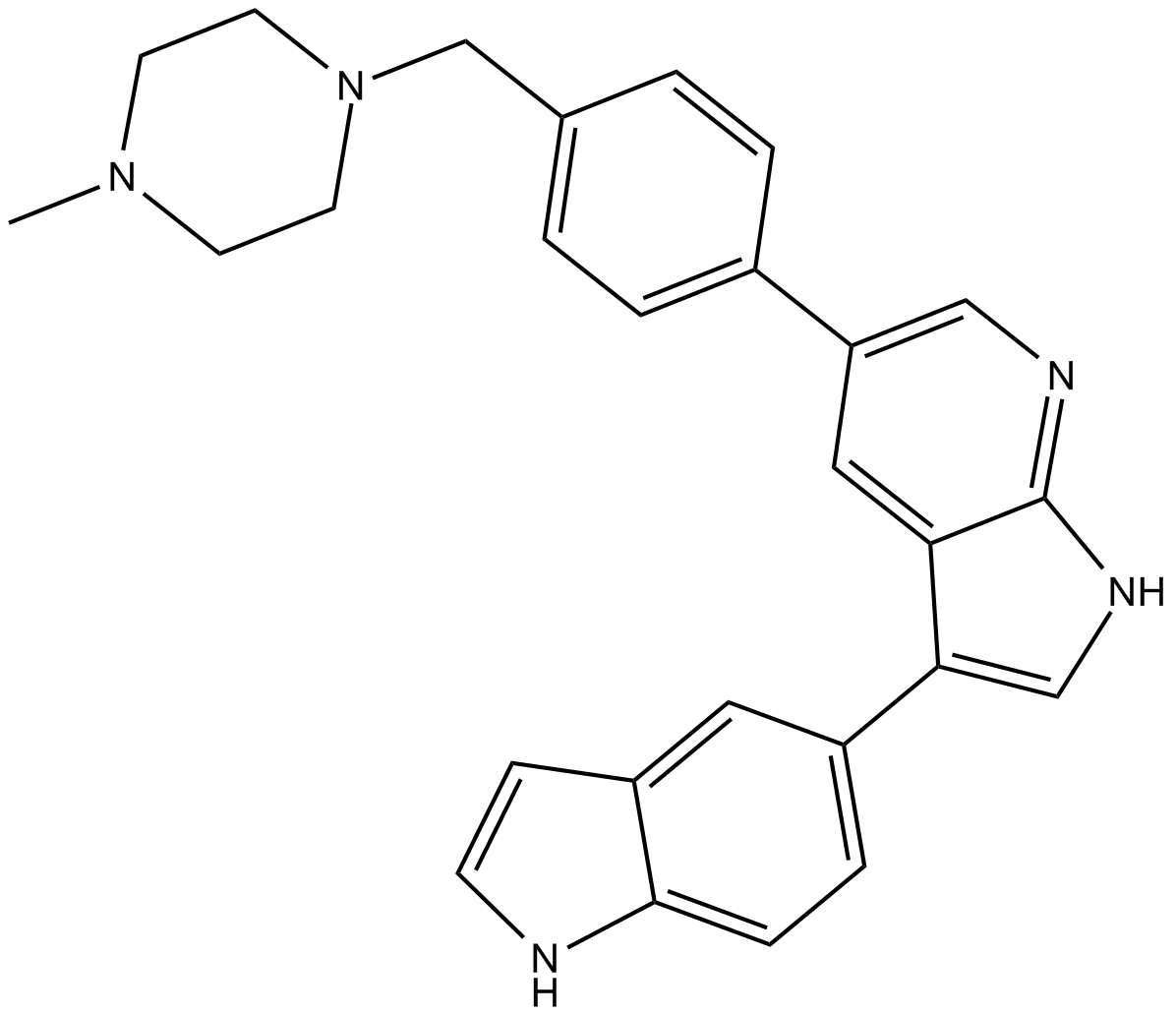Mixed Lineage Kinase
Mixed lineage kinases (MLKs) are mitogen activated protein kinase kinase kinases (MAPKKKs) with features of both serine-threonine and tyrosine kinases that regulate the c-Jun N-terminal kinase (JNK) mitogen activated protein kinase (MAPK) signaling cascade, and also regulate p38 and extracellular signal-regulated kinase (ERK).
MLK3 (MAP3K11) is the most widely expressed MLK family member, and is expressed in neurons (as well as other cell types). At the cellular level, MLK3 is activated by stress, including reactive oxygen species, ceramide, and TNFα. At the molecular level, it is activated by Cdc42 and Rac, which interact with MLK3, and can cause it to dimerize via a leucine zipper interface, resulting in autophosphorylation and enzyme activation.
Targets for Mixed Lineage Kinase
Products for Mixed Lineage Kinase
- Cat.No. Product Name Information
-
GC36203
GW806742X
GW806742X, an ATP mimetic and a potent MLKL (Mixed Lineage Kinase Domain-Like protein) inhibitor, binds the MLKL pseudokinase domain with a Kd of 9.3 μM.
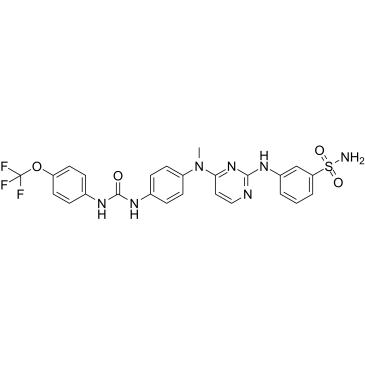
-
GC61454
GW806742X hydrochloride
GW806742X hydrochloride, an ATP mimetic and a potent MLKL (Mixed Lineage Kinase Domain-Like protein) inhibitor, binds the MLKL pseudokinase domain with a Kd of 9.3 μM. GW806742X hydrochloride has activity against VEGFR2 (IC50=2 nM). GW806742X hydrochloride retards MLKL membrane translocation and inhibits necroptosis.
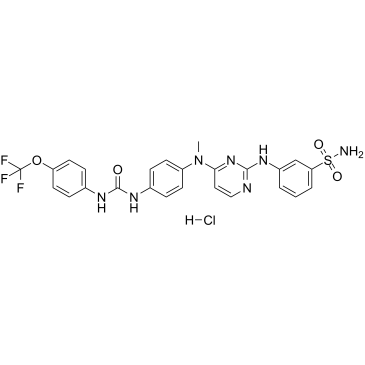
-
GC64634
MLK-IN-1
MLK-IN-1 is a potent, brain penetrant and specific mixed lineage kinase 3 (MLK-3) inhibitor, compound 68, extracted from patent US20140256733A1.
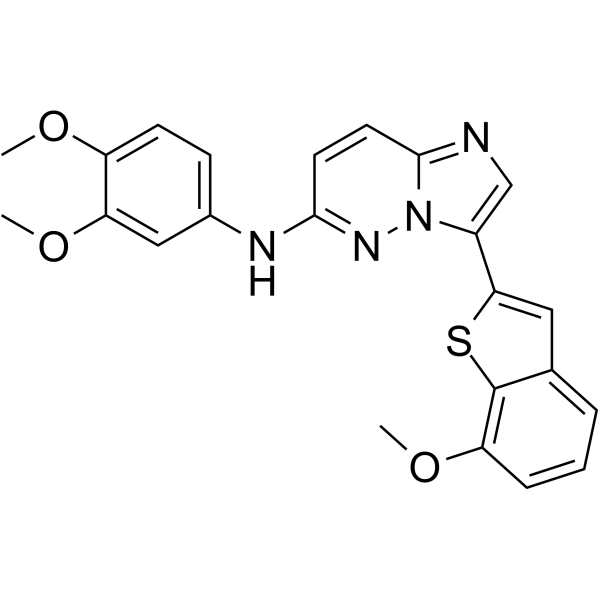
-
GC63680
MLKL-IN-2
MLKL-IN-2 is a MLKL inhibitor extracted from patent WO2021224505A1, compound (i).
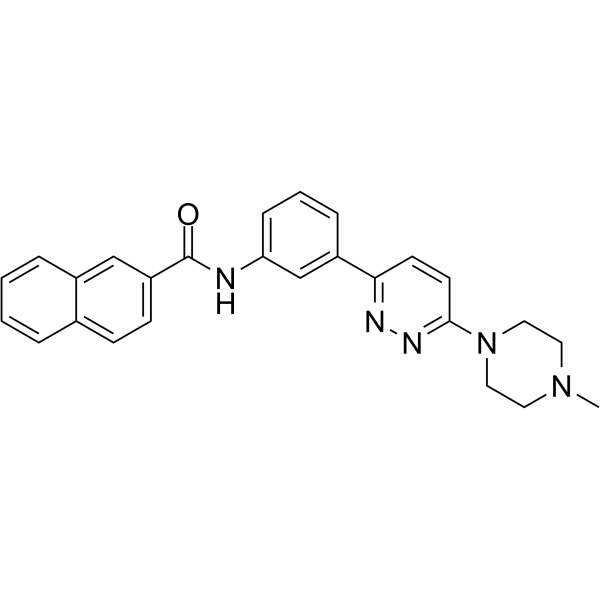
-
GC69543
NecroIr1
NecroIr1 is an iridium (III) complex that induces necrosis in cisplatin-resistant lung cancer cells (A549R). NecroIr1 selectively accumulates in mitochondria, leading to oxidative stress and loss of mitochondrial membrane potential (MMP). NecroIr1 can activate receptor-interacting protein kinase 3 (RIPK3) and mixed lineage kinase domain-like pseudokinase (MLKL), regulating CDK4 expression.
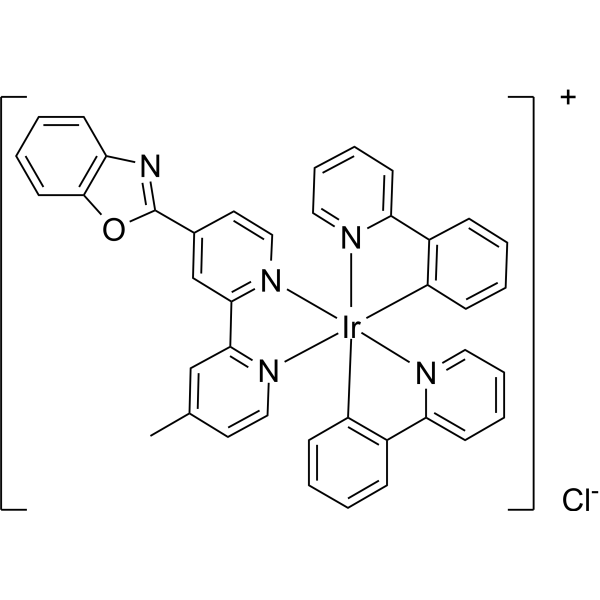
-
GC69544
NecroIr2
NecroIr2 is an iridium (III) complex that induces necrosis in cisplatin-resistant lung cancer cells (A549R). NecroIr2 selectively accumulates in mitochondria, leading to oxidative stress and loss of mitochondrial membrane potential (MMP). NecroIr2 can activate receptor-interacting protein kinase 3 (RIPK3) and mixed lineage kinase domain-like pseudokinase (MLKL), regulating CDK4 expression.
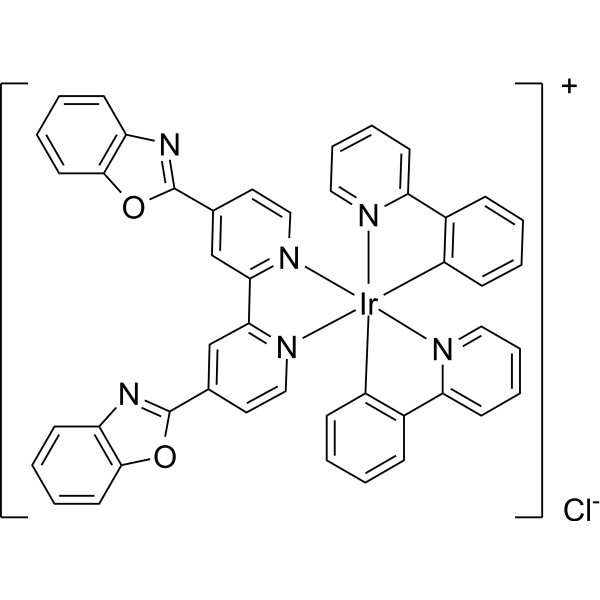
-
GC34140
TC13172
TC13172 is a mixed lineage kinase domain-like protein (MLKL) inhibitor with an EC50 value of 2 nM for HT-29 cells.
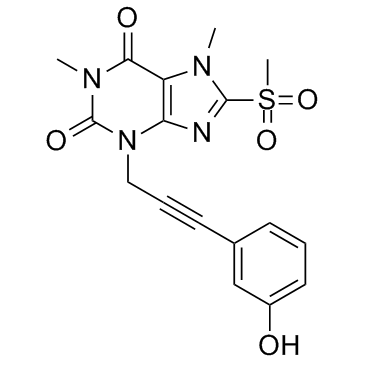
-
GC15004
URMC-099
URMC-099, as a 7‐azaindole‐based MLK3 inhibitor with IC50 of 14 nM, could specifically affect specific Aβ species engaged in disease pathobiology[1].
